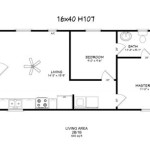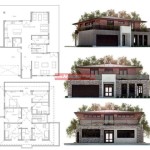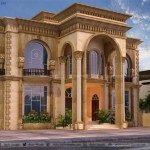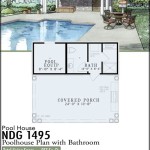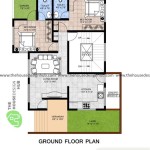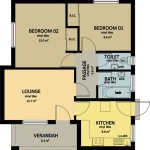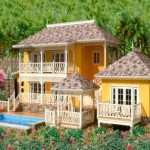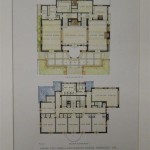Home Plans With Guest Quarters
Home plans incorporating guest quarters offer a versatile solution for accommodating visitors, extended family, or even generating rental income. These spaces provide privacy and comfort for guests while maintaining the integrity of the main living area. Understanding the different types of guest quarters and their design considerations can help homeowners choose the best option for their needs and property.
Guest quarters can take various forms, each with its own advantages and disadvantages. A detached guest house, often referred to as an accessory dwelling unit (ADU), is a completely separate structure from the main house. This option offers maximum privacy and independence for both the homeowner and guests. ADUs often include a kitchen, bathroom, and living area, allowing for extended stays without impacting the main household's routine.
Attached guest quarters, on the other hand, are integrated into the main house structure. These can be incorporated into a wing of the house, above a garage, or even as a converted basement or attic space. Attached guest suites typically offer less privacy than detached ADUs, but they are often more cost-effective to build and maintain. They also provide easy access to the main house's amenities.
Another popular option is a guest suite incorporated within the main house. This might be a bedroom with an en-suite bathroom and a small sitting area. This type of guest accommodation offers convenience and is ideal for shorter visits. However, it offers less privacy than a separate guest house or attached apartment.
When considering home plans with guest quarters, several key factors should be considered. The available space on the property is a primary concern. Detached guest houses require ample yard space, while attached options are better suited for smaller lots. Local zoning regulations and building codes also play a significant role, dictating the allowable size, placement, and features of guest quarters.
Budget is another crucial factor. Constructing a detached guest house is typically more expensive than converting existing space or adding an attached suite. The desired level of amenities, such as a full kitchen or laundry facilities, will also impact the overall cost.
The intended use of the guest quarters should also inform the design. For long-term guests or multi-generational living, a fully equipped kitchen and separate living area are essential. If the space will primarily be used for occasional overnight guests, a simple bedroom with a private bathroom may suffice. If the homeowner intends to use the space for rental income, local regulations regarding rental units should be carefully reviewed.
Accessibility is an important consideration, especially when planning for aging parents or guests with mobility issues. Features like ramps, wider doorways, grab bars, and accessible showers should be incorporated into the design as needed. The proximity of the guest quarters to the main house should also be considered, ensuring ease of access for all occupants.
Privacy is a key concern for both homeowners and guests. Careful placement of windows and doors, as well as the use of landscaping and fencing, can enhance privacy. Soundproofing between the guest quarters and the main house can also be beneficial, particularly for attached units.
Design aesthetics should be considered to ensure the guest quarters complement the main house while maintaining a distinct character. Matching architectural styles and exterior finishes create a cohesive look, while interior design choices can reflect the guest quarters' intended function and create a welcoming atmosphere.
Utility connections are a practical consideration that should not be overlooked. Detached guest houses will require separate utility hookups, while attached units can often share existing systems. Plumbing, electrical, and HVAC systems should be designed to accommodate the added demand of the guest quarters.
Parking is another important factor, particularly if guests will have their own vehicles. A dedicated parking space or driveway for the guest quarters can prevent parking conflicts and ensure convenient access. The location and design of parking areas should be considered in relation to both the main house and the guest quarters.
Landscaping can enhance the privacy and aesthetics of guest quarters. Strategically placed trees, shrubs, and fences can create a buffer zone between the guest quarters and the main house, providing a sense of seclusion. Outdoor lighting can enhance safety and security, while patios and decks can provide additional outdoor living space for guests.
Careful planning and consideration of these factors can help homeowners choose the best home plan with guest quarters to suit their needs, lifestyle, and property. Consulting with an architect and builder experienced in designing and constructing guest quarters is essential to ensure a functional, comfortable, and code-compliant space.

Casita Is The Perfect Home Office Guest Quarters Or Mother In Law Suite

House Plans With In Law Suites Houseplans Blog Com

Casita Is The Perfect Home Office Guest Quarters Or Mother In Law Suite

Designing Overnight Guest Space In Your Timber Frame Home
Small Guest House Plan Floor

Arts And Crafts Country Home With 5 Bedrms 2473 Sq Ft Plan 108 1692

130 House Plans Multi Family Ideas How To Plan Floor

Casita Is The Perfect Home Office Guest Quarters Or Mother In Law Suite

Find The Perfect In Law Suite Our Best House Plans Dfd Blog

Guesthouse Plans For A Small 2 Bedroom Lakeside Cabin

